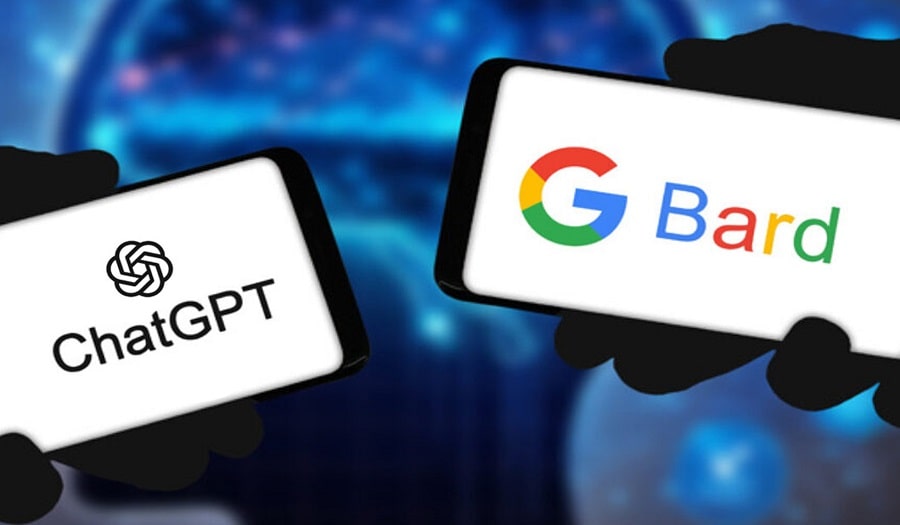Comparison of GPT-4 and Google’s Bard

In the world of artificial intelligence (AI), language models have been making significant strides, revolutionizing how machines understand and generate human-like text. Two prominent contenders in this sphere are OpenAI’s GPT-4 and Google’s Bard. This article delves into the intricacies of these two models, comparing their features, strengths, and weaknesses.
The Essence of ChatGPT
ChatGPT, including its latest version, GPT-4, is an AI language model developed by OpenAI. Leveraging machine learning, it generates human-like text based on the input it receives. It’s capable of carrying out complex tasks like drafting emails, writing articles, and even composing poetry. GPT-4 can understand images, adapt its behavior based on user preference, and exhibit improved coherence in conversations compared to its predecessors.
Decoding Google Bard
Google’s Bard, named after the iconic playwright William Shakespeare, is a language model developed by Google. It aims to generate human-like text and excels at creating long, coherent pieces of writing. Unlike GPT-4, Bard is specifically fine-tuned for storytelling, making it uniquely capable of crafting detailed narratives that stay on track.
The Distinctive Divide: GPT-4 Vs. Google Bard
Several differences mark the unique capabilities of GPT-4 and Google Bard:
- Functionality: While both models excel at text generation, Bard is specifically designed for storytelling, while GPT-4 has a broader range of applications, including answering queries, writing articles, and more.
- Coherence: Bard tends to create longer, more coherent narratives. GPT-4, although significantly improved in coherence compared to its predecessors, may still produce inconsistencies during long conversations.
- Image Understanding: A significant distinction is GPT-4’s ability to understand and generate descriptions for images, a feature currently absent in Bard.
- Behavior Adaptability: GPT-4 can adjust its behavior based on user preferences, providing a more personalized user experience, a feature that Bard doesn’t support as of the time of writing.
- Features: Chatbot was implemented in Maria casino. This significantly reduced the load and freed up technical support, which improved the quality of casino customer service.

Comparative Characteristics of the Chatbots
Here’s a side-by-side comparison of the two models:
GPT-4
- Multifunctional text generation
- Understands and describes images
- Can adapt behavior to user preferences
- Improved coherence and context understanding
- Multilingual capabilities
Google Bard
- Specialized in narrative storytelling
- Produces long, coherent pieces of text
- Lacks image understanding and behavioral adaptability
- Excels in keeping narratives on track
Conclusion
Both GPT-4 and Google Bard represent significant advancements in AI language models, each bringing unique strengths to the table. GPT-4’s versatility and image understanding make it suitable for a broad range of applications, while Bard’s storytelling prowess sets it apart for narrative generation. As these models continue to evolve, they promise to open new horizons in AI text generation, making interactions more coherent, engaging, and human-like.
